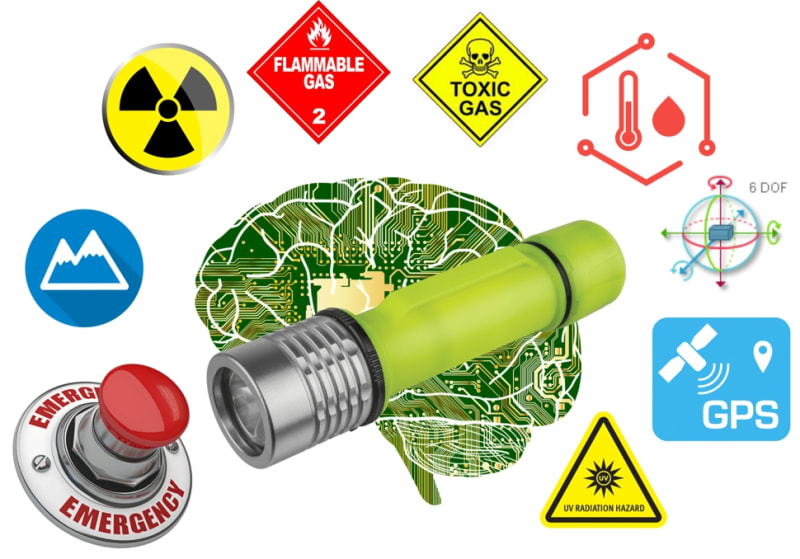We propose the development of a smart flashlight for employees of rescue services, firefighters, miners, police officers, people working in dangerous conditions and even tourists. It can be used as an ordinary flashlight, in the hands, or it can be fixed on the helmet of the employee. The flashlight must be equipped with a radioactive radiation sensor, sensor of hazardous asphyxiating and explosive gases, ultraviolet, infrared and visible radiation, temperature, humidity and atmospheric pressure sensors (can be converted to altitude above sea level). In addition, a GPS sensor will be built into the case, for operation in open areas, as well with the inertial measurement unit (IMU), for determining coordinates and moving in buildings or underground. All collected data will be saved on the internal memory card (a kind of black box), as well as transmitted via Wi-Fi and Bluetooth for telemetry. The Bluetooth interface will allow us to connect a flashlight to augmented reality glasses to alert the employee about the dangers in real time. The flashlight can also be equipped with additional means of audiovisual observation, with the possibility of both local recording (as FPV) and transmitting the image to a remote observer (for example, to a colleague of a miner or a firefighter to his AR glasses, to improve interaction).
Combining readings from different sensors, we can quite accurately determine dangerous situations. For example, a sharp increase in atmospheric pressure, temperature, and acceleration - signals an explosion, and a decrease in pressure and high acceleration - indicate a fall from a height. By analyzing this data, we can send warnings to colleagues about the danger. In such situations, the flashlight should produce sound and vibration (for the case of working in noisy conditions), as well as be able to change the color and intensity of lighting (also to warn both the operator and colleagues).
Given the extreme conditions of use, the flashlight must be very durable (the body of carbon fiber, or partially metallic for cooling, as it must pass both radiation and radio signals), and is equipped with powerful batteries and quite strong multi-colored LED illuminators. If we turn on the fantasy (and when the price of the DLP matrix falls), we can use a projector (colored LEDs with a DLP matrix) instead of the usual illuminator, which will allow us to design warning signs and images, such as arrows, messages, numbers, etc.
Of course, at the start of production Such a flashlight will be relatively expensive, however, when mass production and taking into account the cheapening of modern sensors and other electronic components, the price will drop significantly. Although taking into account the scope of application and the ability to save human lives (which cannot be estimated with money), the price does not seem critical.
Like this entry?
-
About the Entrant
- Name:Alexander Molnar
- Type of entry:individual
- Patent status:none

